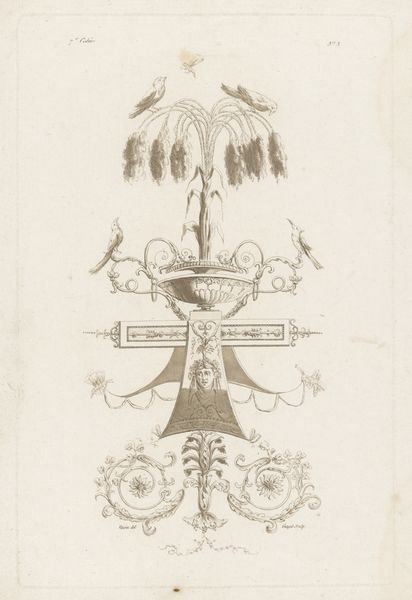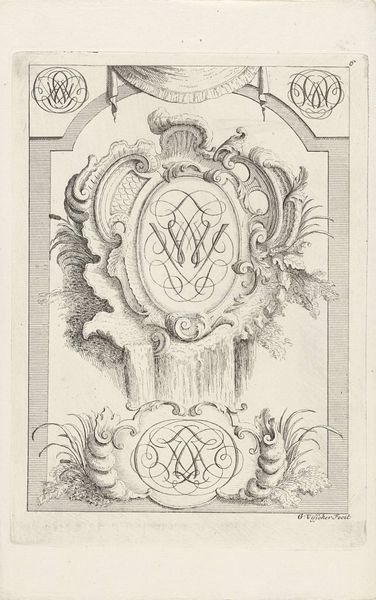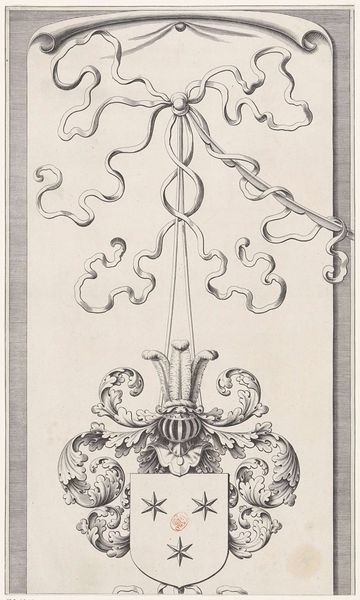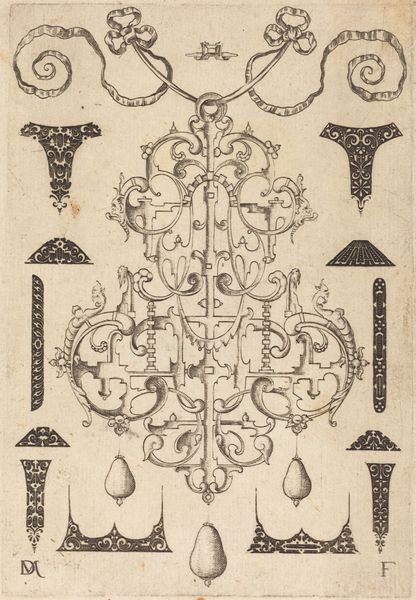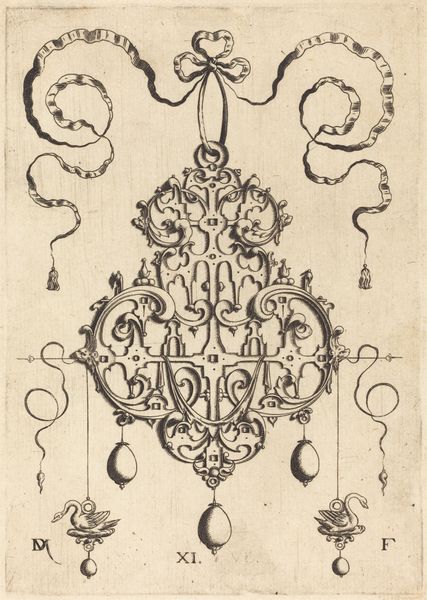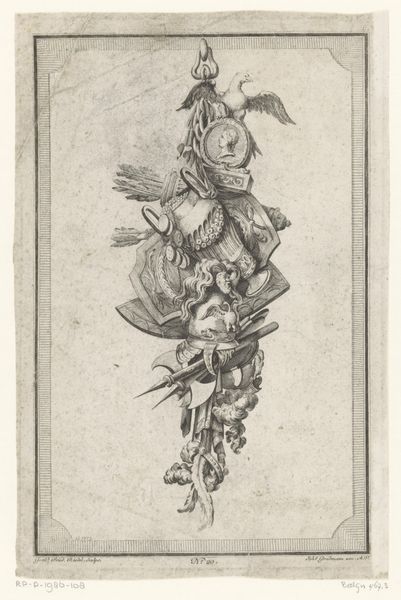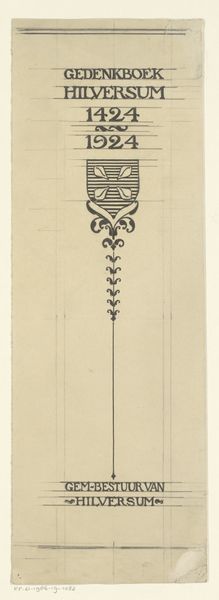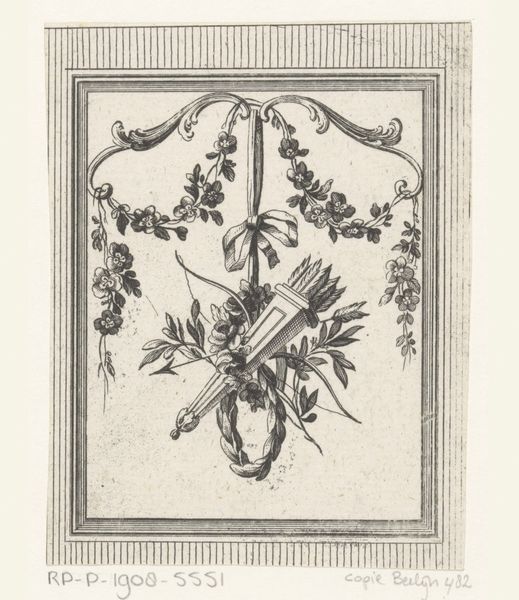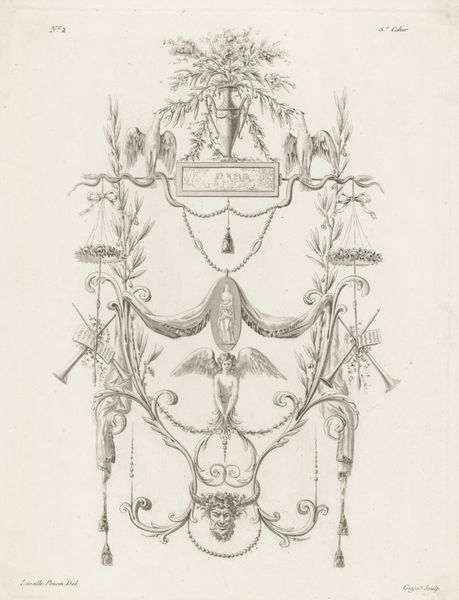
drawing, graphic-art, ornament, print, etching, pen, engraving
#
drawing
#
graphic-art
#
ornament
#
baroque
# print
#
pen sketch
#
etching
#
old engraving style
#
pen-ink sketch
#
line
#
pen work
#
pen
#
engraving
Dimensions: height 194 mm, width 133 mm
Copyright: Rijks Museum: Open Domain
Curator: This densely packed image, currently held at the Rijksmuseum, is titled "Ornament met folterwerktuigen," which translates to "Ornament with torture instruments." It's an engraving, etching, and pen drawing made sometime between 1565 and 1630 by Antonio Tempesta. Editor: My immediate impression is of organized chaos. It's a baroque assemblage of lines and shapes, but the central symmetry provides a surprising sense of order. The tonal range is narrow, of course, given the medium, but the varying line weights create depth. Curator: Absolutely, that tension is palpable. The objects, so precisely rendered, are mostly implements associated with inflicting pain. At the center is the "fasces," an ax bundled with rods, a Roman symbol of authority and punishment. But then we see whips, ropes, and weighted implements arranged seemingly without hierarchy. Editor: The lines have an incredible vitality, creating a kind of vibrating energy across the surface. Semiotically, the fasces dominate, but the sheer number of other objects introduces visual complexity. This creates a tension between order, hierarchy, and chaotic potential. Curator: I think that ambiguity is central to understanding its cultural purpose. These images served as pattern books, providing designs for artisans, so they are not documents of specific tortures, but rather symbols of power and transgression. Consider the social context. What did these objects mean to viewers who knew violence intimately, in a society where public torture was common? Editor: It is tempting to apply modern concepts of psychology when examining the engraving. One could see it as an externalisation of anxiety, given the historical backdrop of conflict and religious unrest. Curator: And yet there’s an element of distancing; the ornamentation perhaps desensitizes the viewer, creating an aesthetic appreciation alongside the dark implications. That's the uncanny paradox. The image itself performs a kind of… symbolic violence. Editor: A captivating and profoundly disquieting artwork—masterful use of line and careful tonal variation. Curator: A powerful artifact offering complex and uncomfortable insight into a society steeped in visible power and everyday brutality.
Comments
No comments
Be the first to comment and join the conversation on the ultimate creative platform.

